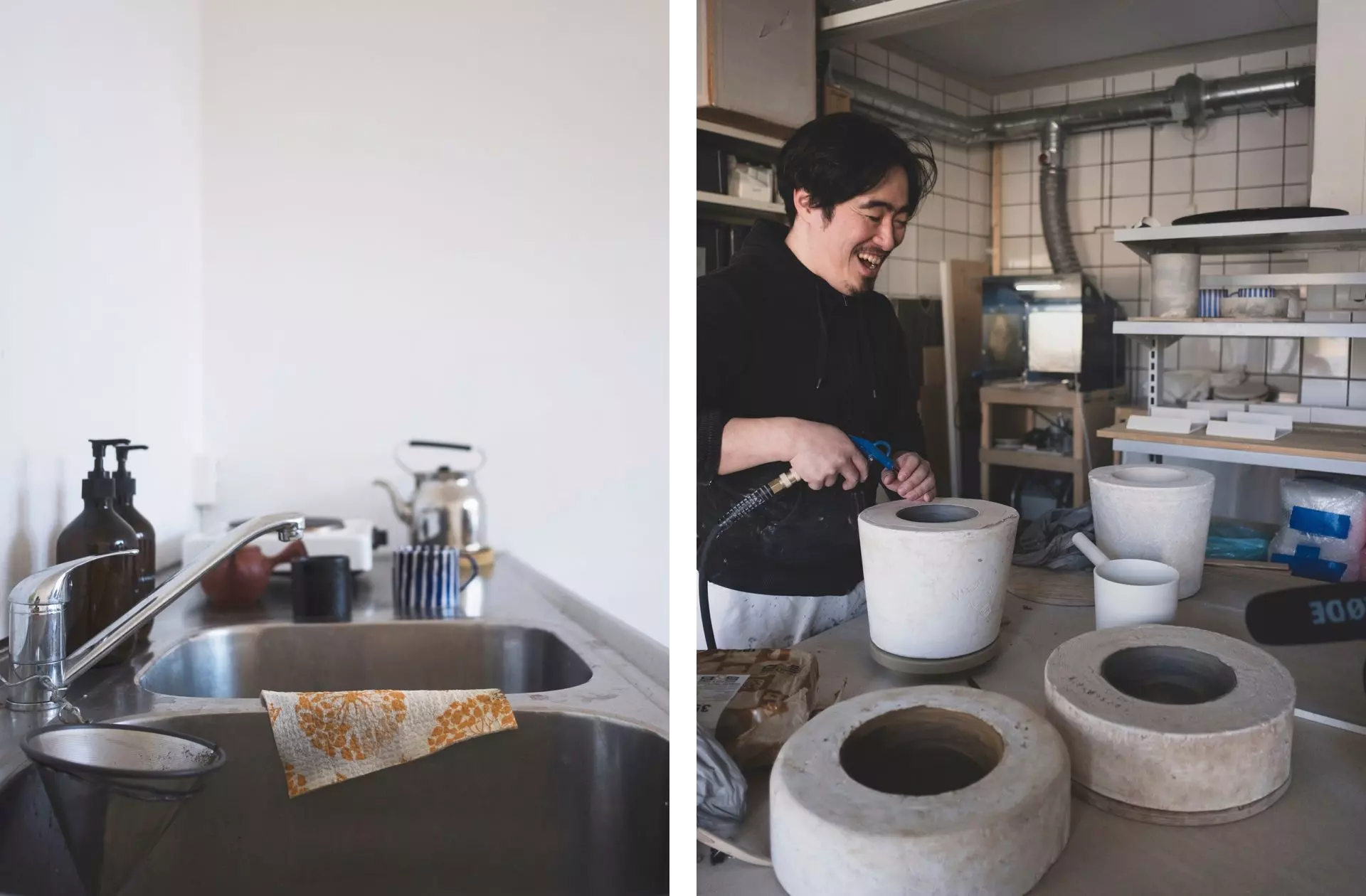Studio Oyama
Masas hands are constantly dry, no matter how much he lubricates them, for more than a decade they have kneaded, turned and trimmed.
Masas hands are constantly dry, no matter how much he lubricates them, for more than a decade they have kneaded, turned and trimmed.
One afternoon in 1996, Masayoshi Oya (or Masa as friends call him) was watching TV at his parents’ home in Tokyo when he stumbled on a 60’s inspired indie pop song video from Sweden. The song playing was Carnival with the group Cardigans. There was something about the retro-inspired aesthetics and the airy sound that felt familiar and new at the same time. The music remained in his head for a long time.
Ten years later (2006) Masa sent an application to the craft school Capellagården in Vickleby, Öland. He was accepted and packed the bags to move to Sweden.
– It took me two hours to buy a train ticket at the Central station in Stockholm. I knew nothing basically about Sweden, I could not speak a word in Swedish nor English.

The sound of the turntable is soft in Masas studio on Hisingen in Gothenburg. The process is meditative, he says. The whole body works, the brain and hands are in direct contact with each other. The turning may require the most focus. The hands must be kept still, the clod centered, and the whole body adapted to the properties of the clay to obtain the desired shape.
– I prefer to turn, but occasionally roll and cast in plaster molds as the clay needs the same thickness all the way. So there are a few different reasons why I change technique.
Masas hands are constantly dry, no matter how much he lubricates them, for more than a decade they have kneaded, turned and trimmed. The fact that Masas popularity has grown beyond the borders of Sweden is evident. Besides producing products on demand, he also produces artworks for exhibitions around the world.
Masayoshi Oya (b 1979) was born in Japan, trained in Japan and in Sweden, and has worked in Gothenburg for many years. In the media of ceramics and with great precision, he creates both practical and artistic pieces as well as sculptures that challenge our preconceptions about what ceramics can be. In 2019 he received the prestigious scholarship by The Sten A Olsson Foundation for Research and Culture, with an exhibition at Göteborgs Konstmuseum in Feb 2020.
Studio Oyama